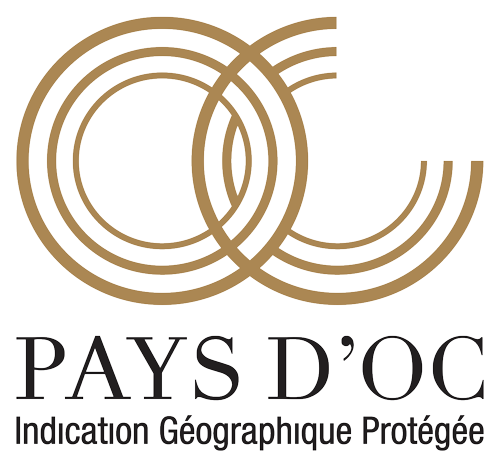Aromas and colours, 58 permitted grape varieties
An array of 58 grape varieties
The grape variety is at the core of a wine’s personality. The defining feature of IGP Pays d’Oc is to provide a range of wines running the gamut in terms of aroma and flavour due to an extensive array of 58 grape varieties. Their aromas are either expressed individually or as part of a blend.
An array of 58 grape varieties
The grape variety is at the core of a wine’s personality. The defining feature of IGP Pays d’Oc is to provide a range of wines running the gamut in terms of aroma and flavour due to an extensive array of 58 grape varieties. Their aromas are either expressed individually or as part of a blend.
Eight main grape varieties, but myriad possibilities
Eight main grape varieties, four reds and four whites, are used to produce IGP Pays d’Oc wines. However, there are thousands of other possibilities with 58 grape varieties permitted by the endorsement, but also by the geographical and climatic conditions of Pays d’Oc Mediterranean vineyards which have allowed countless grape varieties to thrive. Either international or authentically local, like Carignan and Syrah of Mediterranean origin, their aromas do not express themselves in the same way depending on the terroir, the personality of the winegrowers and the choice of single varietal or blends. But all of them have a history rooted in Languedoc and Roussillon.
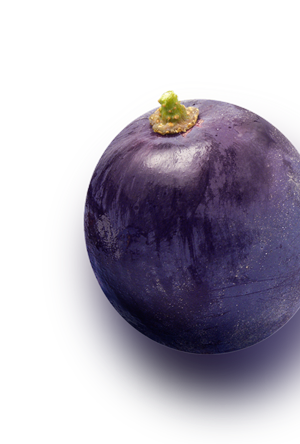
Grape varieties
Grape varieties
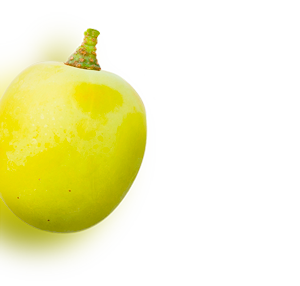
Merlot, Cabernet-Sauvignon, Syrah, Grenache
Chardonnay, Sauvignon, Viognier, Muscat à Petits Grains
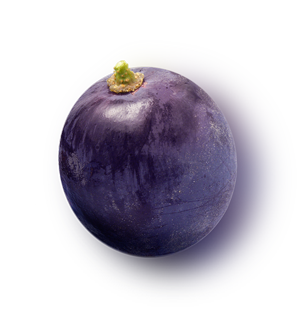

Grape varieties
Merlot, Cabernet-Sauvignon, Syrah, Grenache
This grape variety first emerged in Bordeaux before reaching the vineyards of South-West France and Languedoc-Roussillon. It is the third most planted red grape variety in France after Grenache and Carignan. Merlot is a firm international favourite and a real force to be reckoned with in Pays d’Oc, which is the world’s leading producer with 21,000 hectares. Its broad-ranging aromatic spectrum – from fruity and velvety through to full-bodied and structured – secures it the lion’s share of a very varied range of red and rosé wines. Its aromatic complexity makes it a blending component for fine, age-worthy wine, but it also delivers supple, easy-drinking wines designed for fairly early drinking. In the IGP Pays d’Oc region, it is often blended with another grape variety for red and rosé wines and combined with, say, Cabernet-Sauvignon.
The world’s king of red grape varieties, this Bordeaux varietal has gained incredible traction internationally (Napa Valley in California, Chile, New Zealand, China, etc.) and now covers 6% of the world’s area under vine. In Languedoc-Roussillon, where it was skilfully introduced in the 1970s by winegrower Aimé Guibert at Mas de Daumas Gassac, it accounts for 33% of vineyard acreage. Its powerful tannin structure, synonymous with full-bodied, age-worthy wines, has cemented its reputation with that of Bordeaux’s Grands Crus (Château Latour, Mouton Rothschild, etc.). Cabernet-Sauvignon produces very slow-maturing wines which over time offer up supple tannins, with fruity and spicy aromas that can develop tertiary aromas of forest floor, leather and cocoa. Its ability to produce stellar wines makes it the cornerstone varietal of top-end IGP Pays d’Oc.
Syrah is now the world’s ‘star’ grape variety, flourishing over 40,000 hectares in Languedoc-Roussillon. In the IGP Pays d’Oc region, this Mediterranean grape variety with its substantial wealth of aromas fully flexes its creative muscle, from expressive rosés to powerful, barrel-matured reds, as well as light and fruity ‘primeur’, early-release wines.
Introduced into Languedoc in the Middle Ages, Spanish-native Grenache Noir is now the most widely grown grape variety in the world after Merlot and Cabernet-Sauvignon. In Languedoc-Roussillon, it owes its reputation to the dessert wines of Roussillon, but it is also used in appellation blends for Collioure, Rivesaltes, Tavel and Châteauneuf-du-Pape. With its fairly high alcohol and low tannin content, in Pays d’Oc it shows a profusion of black fruits such as prunes and figs, underscored by notes of cocoa, coffee and spices. When blended, it adds roundness to the wines.
Originally from Aragon in Spain, this hallmark Mediterranean grape variety was established in the region several centuries ago. It is enjoying a revival after being much-maligned in the plains of Languedoc, due to its ability to produce high yields. Now fashionable again, it offers good resistance to water stress and excels with old vines planted on schist or clay-limestone soils. It currently covers 25,000 hectares out of the 120,000 hectares of IGP Pays d’Oc vineyards.
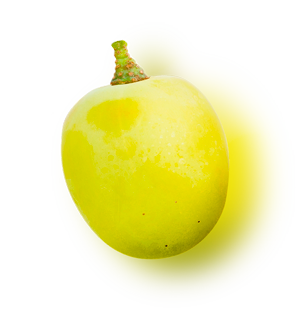

Grape varieties
Chardonnay, Sauvignon, Viognier, Muscat à Petits Grains
The global king of white grape varieties, Chardonnay originated in Burgundy and shows great talent in Pays d’Oc, securing it a place among elite white IGP Pays d’Oc wines. It extends over nearly 13,792 hectares in the region. In Languedoc-Roussillon, Chardonnay is also used to produce Crémant and Blanquette de Limoux, coupled with Mauzac and Chenin.
The stellar white grape variety Sauvignon delivers its finest expression in the cooler vineyard sites in Pays d’Oc, where it accounts for more than 5,000 hectares of the region’s area under vine. Not very productive although much sought-after for its structure, freshness and minerality, it is often blended with other grape varieties.
It is likely that Viognier was introduced to Gaul by the Emperor Probus. Viognier has been grown for aeons in the northern Côtes du Rhône, but only covers 1,500 hectares in Pays d’Oc, producing mainly single varietals, which are often highly prized. Viognier develops very complex aromas, both fruity (peach, pear, apricots, tropical fruits) and floral (white flowers).
Grown along the shores of the Mediterranean since Antiquity, Muscat à petits grains is mainly found in the South of France and Spain. Its name is associated with fortified sweet wines. Ably represented in Languedoc-Roussillon by Muscat de Frontignan, Muscat de Lunel and Muscat de Saint-Jean-de-Minervois, it is also used to make dry white wines and sparkling wines, such as Clairette de Die, Moscato d’Asti and Asti spumante in Italy. In the vineyards of Pays d’Oc, Muscat à petits grains produces many dry white wines.
This grape variety first emerged in Bordeaux before reaching the vineyards of South-West France and Languedoc-Roussillon. It is the third most planted red grape variety in France after Grenache and Carignan. Merlot is a firm international favourite and a real force to be reckoned with in Pays d’Oc, which is the world’s leading producer with 21,000 hectares. Its broad-ranging aromatic spectrum – from fruity and velvety through to full-bodied and structured – secures it the lion’s share of a very varied range of red and rosé wines. Its aromatic complexity makes it a blending component for fine, age-worthy wine, but it also delivers supple, easy-drinking wines designed for fairly early drinking. In the IGP Pays d’Oc region, it is often blended with another grape variety for red and rosé wines and combined with, say, Cabernet-Sauvignon.
The world’s king of red grape varieties, this Bordeaux varietal has gained incredible traction internationally (Napa Valley in California, Chile, New Zealand, China, etc.) and now covers 6% of the world’s area under vine. In Languedoc-Roussillon, where it was skilfully introduced in the 1970s by winegrower Aimé Guibert at Mas de Daumas Gassac, it accounts for 33% of vineyard acreage. Its powerful tannin structure, synonymous with full-bodied, age-worthy wines, has cemented its reputation with that of Bordeaux’s Grands Crus (Château Latour, Mouton Rothschild, etc.). Cabernet-Sauvignon produces very slow-maturing wines which over time offer up supple tannins, with fruity and spicy aromas that can develop tertiary aromas of forest floor, leather and cocoa. Its ability to produce stellar wines makes it the cornerstone varietal of top-end IGP Pays d’Oc.
Syrah is now the world’s ‘star’ grape variety, flourishing over 40,000 hectares in Languedoc-Roussillon. In the IGP Pays d’Oc region, this Mediterranean grape variety with its substantial wealth of aromas fully flexes its creative muscle, from expressive rosés to powerful, barrel-matured reds, as well as light and fruity ‘primeur’, early-release wines.
Introduced into Languedoc in the Middle Ages, Spanish-native Grenache Noir is now the most widely grown grape variety in the world after Merlot and Cabernet-Sauvignon. In Languedoc-Roussillon, it owes its reputation to the dessert wines of Roussillon, but it is also used in appellation blends for Collioure, Rivesaltes, Tavel and Châteauneuf-du-Pape. With its fairly high alcohol and low tannin content, in Pays d’Oc it shows a profusion of black fruits such as prunes and figs, underscored by notes of cocoa, coffee and spices. When blended, it adds roundness to the wines.
Originally from Aragon in Spain, this hallmark Mediterranean grape variety was established in the region several centuries ago. It is enjoying a revival after being much-maligned in the plains of Languedoc, due to its ability to produce high yields. Now fashionable again, it offers good resistance to water stress and excels with old vines planted on schist or clay-limestone soils. It currently covers 25,000 hectares out of the 120,000 hectares of IGP Pays d’Oc vineyards.
The global king of white grape varieties, Chardonnay originated in Burgundy and shows great talent in Pays d’Oc, securing it a place among elite white IGP Pays d’Oc wines. It extends over nearly 13,792 hectares in the region. In Languedoc-Roussillon, Chardonnay is also used to produce Crémant and Blanquette de Limoux, coupled with Mauzac and Chenin.
The stellar white grape variety Sauvignon delivers its finest expression in the cooler vineyard sites in Pays d’Oc, where it accounts for more than 5,000 hectares of the region’s area under vine. Not very productive although much sought-after for its structure, freshness and minerality, it is often blended with other grape varieties.
It is likely that Viognier was introduced to Gaul by the Emperor Probus. Viognier has been grown for aeons in the northern Côtes du Rhône, but only covers 1,500 hectares in Pays d’Oc, producing mainly single varietals, which are often highly prized. Viognier develops very complex aromas, both fruity (peach, pear, apricots, tropical fruits) and floral (white flowers).
Grown along the shores of the Mediterranean since Antiquity, Muscat à petits grains is mainly found in the South of France and Spain. Its name is associated with fortified sweet wines. Ably represented in Languedoc-Roussillon by Muscat de Frontignan, Muscat de Lunel and Muscat de Saint-Jean-de-Minervois, it is also used to make dry white wines and sparkling wines, such as Clairette de Die, Moscato d’Asti and Asti spumante in Italy. In the vineyards of Pays d’Oc, Muscat à petits grains produces many dry white wines.
